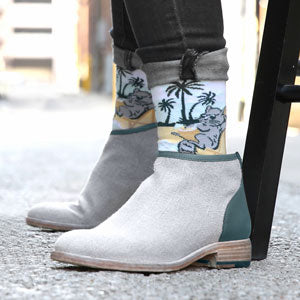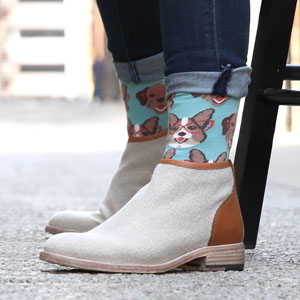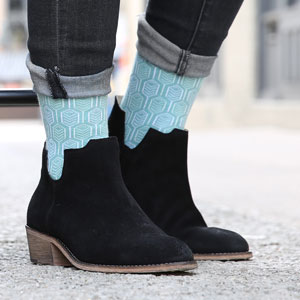THE HISTORY OF ARGYLE SOCKS
A BRIEF TOUR OF HOW ARGYLE BECAME AN ICONIC CLASSIC
THE HISTORY OF ARGYLE SOCKS
A BRIEF TOUR OF HOW ARGYLE BECAME AN ICONIC CLASSIC

WHO INVENTED ARGYLE?
Unlike many patterns and trends of today, the history of argyle has a long and storied past. It is not a flash in the pan trend, here today and gone tomorrow. Argyle is a relic of history that has survived the test of time and continues to be one of the most iconic patterns seen in fashion.
To understand the origin of the argyle pattern, it is important to first understand a brief history of Scottish fabrics and wardrobes. The Campbell Clan resided in the Highland region in the district of Argyll (thus the term argyle) on the freshwater of Loch Awe in Scotland. Highlanders wore a check-like pattern called tartan, described best by the Gaelic word “breacan" meaning chequered.
Tartan is a repeating arrangement of criss-crossed rectangles, squares and lines that create a check-like pattern. Early tartan patterns used mainly dye producing plants, trees, roots and berries to create the simple yet unique pattern, and often only incorporated two or three colors in each fabric until advancements in weaving and chemical dyes allowed for more intricate and vivid patterns.
Highlanders wore this traditional everyday garb for hundreds of years until it was outlawed in the 18th century after the Battle of Culloden. Parliament in London sought to crush the rebellious clan systems in the Highlands by outlawing tartan and wearing weapons, but instead, created an underground, cult-like following of the iconic pattern, thus making it a symbol of rebellion.
When King George IV of the United Kingdom visited Edinburgh in 1821, he suggested that people attending the official functions and processions should wear their respective tartan pattern. Tartan, along with the efforts of Walter Scott, helped romanticize Scotland as a holiday destination and became the brand identity of Scotland for years to come.

SO, WHAT IS THE DIFFERENCE BETWEEN TARTAN (PLAID) AND ARGYLE?
Tartan, the check-like pattern that looks similar to plaid, and argyle, the diamond-like pattern seen throughout 20th and 21st century fashion, are obviously different, but it is believed that argyle is an evolution of the iconic tartan pattern.
By the 17th century (and some suggest even earlier), the Highlanders used the tartan pattern not just for kilts and plaid (the fabric draped over the shoulders), but for tartan hose (or socks) as well. An archived letter from 1746 states “On Saturday the 26th, we were required, on account of our later appearance in arms, to furnish 6000 cloth short coats, 12000 linen shirts, 6000 pair of shoes, and as many pairs of tartan hose and blue bonnets."
The tartan hose evolved from foot coverings and hose tops to socks and dress socks. The design, which simply rotates the check-like tartan pattern 45 degrees, simplified over time to repeating diamonds with a single stitch intersecting each diamond.

Example of plaid socks from boldSOCKS.com
WHEN DID ARGYLE SOCKS BECOME POPULAR?
Argyle socks, linked to their iconic identity in Scotland and a rebellious history, started showing up in Europe and America early in the 20th century.
The Pringle of Scotland popularized the argyle pattern and later, around the 1920s, the Duke of Windsor, a trendsetter in men’s fashion, began wearing over-the-calf argyle socks with plus four trousers, creating a new sportswear trend and later mens formalwear trend. The leisurewear argyle socks were bold, bright and highly visible because the pants often bunched at the knees.
By the 1930’s, argyle became a mainstay as young men and fashion forward older men began working fun, argyle socks into everyday formalwear. Popularity of the simple diamond pattern continued to grow and went more mainstream in the decades that followed and is still a classic look in dress socks today.






